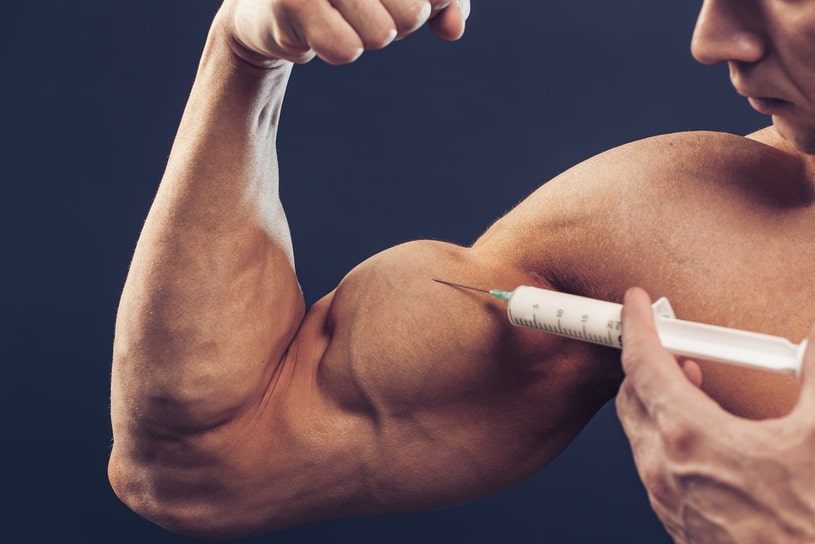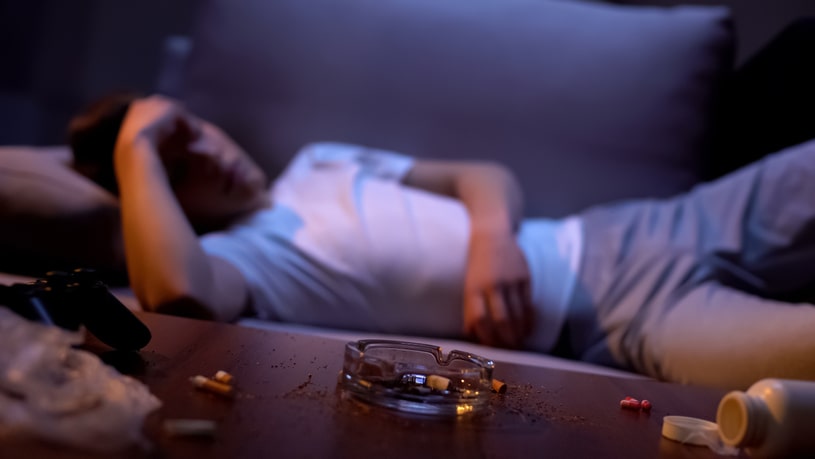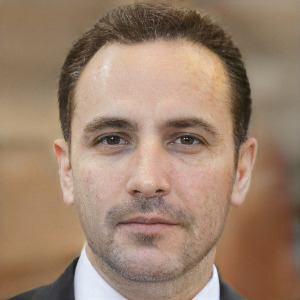Being a psychoactive drug, gamma-hydroxybutyrate is used for treating sleeping disorders in patients with narcolepsy. GHB medical use also includes off-label indications such as alcohol and opioid withdrawal and fibromyalgia. However, recently the substance has become more popular among bodybuilders and youngsters at parties as drug abuse. This article’s information is determined to examine what purposes Xyrem is used for, its label and off-label indications, and appropriate dosages for different age groups.
Table Of Contents:
GHB Legal Status
Back in the 1990s, GHB was legal in the US, being promoted as a dietary supplement. Soon, the substance became a drug of abuse. The number of drug-induced coma victims started to increase.
All these lead to the FDA’s decision to change the gamma-hydroxybutyrate legal status and label gamma-hydroxybutyrate as unsafe and a drug of abuse, listing it as an illicit Schedule I substance. Therefore, in the US, GHB is was illegal to sell, possess, or manufacture gamma-hydroxybutyrate.
For possession, one could get up to two years in prison and/or an unlimited fine. Selling or even giving the drug to other persons can lead to 14 years in prison and/or an unlimited fine.
In 2002, the FDA approved GHB’s prescription formulation, Xyrem (sodium oxybate), to treat cataplexy. Sodium oxybate can be prescribed and purchased only through a patient restricted-access program.
On January 17, 2017, the FDA approved the first generic version of Xyrem (sodium oxybate) with a separate REMS, which has the same Elements for Safe Use (ETASU) Xyrem REMS and is designed to achieve the same level of safety.
It is illegal to sell or give Xyrem to someone else, and the government makes sure that the drug’s purchase is carefully monitored.
Why Was GHB Banned?
Several reasons why the drug was banned will be described below. It is because of these points that the drug is now under strict control.
GHB as a Date Rape Drug
This medicine was easily soluble and did not have any smell, only a slightly salty taste; that is why it was usually mixed with alcoholic beverages for stronger sedative and amnesic effects. Sexual predators used GHB as a party drug for its quick effect on the victims that helped to relax their muscles voluntarily and induced prolonged amnesia for events under the drug’s influence.
GHB as a Bodybuilders Drug
Another illicit use of sodium oxybate was spread among athletes and bodybuilders to improve their performance. Some users took this drug for bodybuilding activities because the drug activates the dopamine release, increases hormone release, invokes restful sleep, and stimulates fat metabolism, leading to further abuse. Such hormone growth leads to increased muscle mass and decreased fat mass. However, gamma-hydroxybutyrate and bodybuilding should not be considered as a solution for extra muscles.
On the contrary, the substance provided a temporary spike in muscle growth and did not work as anabolic. Users should take into account dangerous side effects and both physical and psychological dependence.
GHB as a Party Raves Drug
Some users reported gamma-hydroxybutyrate recreational use as doping at nightlife occasions and raves, mostly accompanied by electronic music and Rampal dancing. The drug produces euphoria and increases sociability, and is used instead of ecstasy or even with it. According to the information from users, the drug was popular within the LGBT+ community. Often, patients were transported from night clubs to hospitals with severe intoxication resulting from polydrug use. Such conditions require substance abuse treatment under medical supervision.
How is This Drug Used?
The GHB drug class is a central nervous system (CNS) depressant with anesthetic and sedative effects. Gamma-hydroxybutyric slows down the activity of the brain and certain areas of the central nervous system. Pure Gamma-hydroxybutyrate is a substance of abuse in the United States. However, gamma-hydroxybutyrate as an active ingredient can also be found in Xyrem.
Xyrem For Sleep Disorders In Patients With Narcolepsy
Sodium oxybate use is associated with dose-related improvements in treating symptoms of narcolepsy, particularly cataplexy in narcolepsy and excessive daytime sleepiness. Xyrem for narcolepsy showed a reduction in the number of attacks of cataplexy. Compared to other drugs such as antidepressants and stimulants typically used to treat the disorder, only using Xyrem for insomnia helps deal with both symptoms of narcolepsy with a lower chance of developing tolerance and unwelcome side effects. The use of Xyrem for sleep is an FDA-approved approach to narcolepsy treatment.
Xyrem For Alcohol Withdrawal
According to clinical studies, a prescription of gamma-hydroxybutyric acid may ease alcohol withdrawal symptoms and restrain alcohol consumption. Only about 10-15% of patients had craving episodes within the treatment program. During three months of research using gamma-hydroxybutyrate for alcohol withdrawal symptoms, the drug showed much better results than a placebo in the total number of abstinent days and alcohol craving.
Moreover, Xyrem was more effective than diazepam in treating alcohol withdrawal symptoms and as equally efficient as clomethiazole. On the other hand, more research needs to be done to confirm the prevalence of GHB prescription effectiveness over its harm.
Xyrem For Opioid Withdrawal
In double-blind placebo-controlled research, gamma-hydroxybutyrate medical use showed positive results in suppressing opioid withdrawal in 14 heroin and 13 methadone users. The effect from gamma-hydroxybutyric acid occurred 15 minutes after the oral administration and lasted for 2 and 3 hours, respectively. Later the patients received the dose every 2 to 4 hours for the first 2 days and 4 to 6 hours for 6 days. Such an approach suppressed the most abstinence symptoms and improved patients’ overall state. After 8 days of treatment, users reported the absence of withdrawal symptoms, and their program was changed with an intravenous injection of 0.4 mg naloxone. So, doctors issue a prescription for GHB off-label for treating alcohol withdrawal.
Xyrem For Fibromyalgia
Several research papers investigated the use of Xyrem for fibromyalgia. They showed gamma-hydroxybutyrate’s efficiency in dealing with fibromyalgia symptoms, reducing pain, sleep disturbances, and fatigue over time.
A 14-week, randomized, controlled trial studied GHB’s effect versus placebo in 548 patients with fibromyalgia. There were more than 30% less pain in 54.2% and 58.5% of patients treated with sodium oxybate 4.5g and 6g per night, respectively, versus 35.2% for placebo. Improvements in physical condition were also much better after gamma-hydroxybutyrate use than placebo.
However, many of the adverse effects occurred in 5% of the patients treated with GHB; it is twice higher than after the placebo treating program.
Despite proven efficiency, FDA Panel rejects Xyrem as a fibromyalgia treatment because of high abuse potential and possible withdrawal treatment.
Sodium Oxybate Mechanism Of Action
Oxybate (GHB) is a metabolite of γ-aminobutyric acid (GABA), synthesized and accumulated by neurons in the brain. Xyrem’s action mechanism is bringing about ‘delta’ (slow) brain waves and night-time sleep.
With the appropriate amount of gamma-hydroxybutyrate taken at bedtime, a person gets a deeper sleep, and the sleeping session’s duration is prolonged.
However, the full sodium oxybate mechanism of action is not studied completely; the fact is that its therapeutic effects are caused by influencing noradrenergic, dopaminergic, and thalamocortical neurons.
What are the GHB Side Effects?
There is a wide range of side effects of gamma-hydroxybutyrate, including long-term and short-term ones. Acting as a central nervous system depressant, physical effects mainly attract young people by feelings of euphoria. However, the gamma-hydroxybutyrate effects on the body and the brain are damaging, leading to severe consequences.
GHB Short Term Effects
Gamma-hydroxybutyrate affects the body in much the same way as alcohol. The side effects from a single dose appear approximately in an hour.
There are many adverse short term effects of GHB:
- lower heart rate
- decreased body temperature
- drowsiness
- blurred vision
- dizziness
- headaches
- nausea
- diarrhea
- urinary incontinence
- memory lapses
- seizure
- respiratory depression
- decreased consciousness
- sleep-disordered breathing
- parasomnias
- sensitivity to high sodium intake
- coma
- death
People who use gamma-hydroxybutyrate in the injectable form are at higher risk of additional harmful effects of GHB such as:
- Blood-borne viruses
- Bacterial and fungal infection
- Damage to the circulatory system
- Increased likelihood of overdose
If any of the above-mentioned or other side effects are noticed, the patient requires medical help as soon as possible. In extreme cases, further addiction treatment will be beneficial to maintain a sober living.
GHB Long Term Effects
Despite acting similarly to depressants such as alcohol and benzodiazepines, gamma-hydroxybutyrate’s effects lead to increased anxiety and depression. According to the research, abusing liquid ecstasy may damage the long-term memory, working memory, and cognitive function. When a user gets into a GHB coma, one receives hypoxia, a condition when brains receive less oxygen.
Among gamma-hydroxybutyrate long term effects, people also develop dependence and tolerance with increased risk of physical, mental, and social problems, including suicidality.
Xyrem Weight Loss
In the 1960s, the main purposes of drug investigation were to use gamma-hydroxybutyrate for narcolepsy treatment. Usually, the condition is associated with excessive body weight. According to the study, sodium oxybate showed positive sleeping sickness treatment results, but there was a weight loss with GHB.
Narcolepsy patients with and without cataplexy took part in the study to determine if weight-related issues occur only in patients with cataplexy. All patients had obesity and mentioned weight loss with Xyrem treatment, but patients with cataplexy weighed more and lost more weight than those without the condition.
The difference in indicators is possible due to the difference in hypocretin levels. Patients with cataplexy have lower hypocretin levels, more severe energy metabolism impairment, and more remarkable weight loss with sodium oxybate treatment. Also, the decreased body weight is a common gamma-hydroxybutyrate side effect in children.
The FDA does not recommend this drug for weight loss. If you need to lose pounds, ask your doctor about the most appropriate way to do it.
GHB Hangover
Much research determines the sodium oxybate hangover side effect, but some participants report having headaches, numerous black-outs, and uncontrollable sleep.
GHB Effects On The Brain
Xyrem causes oxidative stress in the hippocampus, resulting in memory destruction. Several scientists have discovered the negative impact on brain functioning in excessive and unmindful usage of the substance. In particular, changes in long-term memory, working memory, IQ, and emotional condition were observed as GHB long term side effects.
Users mentioned other Xyrem side effects that induce sleepiness and even coma. Such a situation requires immediate hospitalization and GHB addiction treatment. When a user gets into a gamma-hydroxybutyric coma, one receives hypoxia, a condition when brains receive less oxygen.
Xyrem And Pregnancy
There is no sufficient information about GHB’s side effects on pregnancy. Xyrem is a Pregnancy Category C drug, meaning that animal-reproduction research has not confirmed the fetus’s risk and adverse side effects. At the same time, there are no adequate studies among pregnant women. However, oral administration to rats throughout pregnancy and lactation led to increased stillbirths and decreased offspring postnatal viability and body weight gain.
Sodium oxybate is excreted in human milk after taking the drug orally. In case the mother continues using gamma-hydroxybutyric during breastfeeding, the drug will be present in the mother’s milk, and there is a high possibility of hurting the baby’s health.
Duration of breastfeeding and the necessity of using the drug, and possible side effects of Xyrem should be discussed with a doctor.
Sexual Side Effects
Gamma-hydroxybutyrate is known for its libido-enhancing effects. According to the research, 25.9% of users reported increased libido and more intense attraction towards their sexual partners when using gamma-hydroxybutyric. The feelings of increased sexuality, hypersensitive sensation to touch, and increased euphoria associated with sexual orgasm are determined by gamma-hydroxybutyrate properties, stimulating dopamine release.
However, associating GHB and sex in practice can also lead to adverse sexual consequences such as difficulty remaining physiologically stimulated and achieving orgasm. Furthermore, 24.6% typically experienced blackouts as GHB side effects. That needs to be considered as dangerous factors for suffering sexual or acquisitory crimes.
Xyrem Drug Interactions
Xyrem can interact with many medications and substances, leading to uncomfortable states and life-threatening side effects:
Alcohol
Combining gamma-hydroxybutyrate and alcohol can lead to increased drowsiness and sleepiness and the risk of an overdose.
Amphetamines
While gamma-hydroxybutyrate slows down the CNS, amphetamines speed it up. The combination of these two drugs can lead to unexpected interactions.
Antipsychotics
Since both antipsychotics and GHB act upon the CNS, mixing these two drugs can lead to extensive brain damage.
Narcotics
Gamma-hydroxybutyrate combined with narcotics, such as pain medication, might lead to drowsiness, sleepiness, and other severe side effects. Some of the pain medications that gamma-hydroxybutyrate might interact with are morphine, hydrocodone, and meperidine.
Muscle relaxants
Taking muscle relaxants together with gamma-hydroxybutyrate can boost the drugs’ effects, leading to extreme drowsiness and even coma.
CNS depressants
Interaction of gamma-hydroxybutyrate and other CNS depressants can result in nausea, vomiting, respiratory, and CNS over-depression.
HIV/AIDS drugs
Medications such as saquinavir and ritonavir are used in patients with HIV/AIDS. They can interact with gamma-hydroxybutyrate, which might cause the drugs to stay longer in the system to serious side effects and even overdosing.
Other drugs can also interact with Xyrem. That’s why it is important to inform a doctor about all the medications a patient is currently taken to prevent any adverse side interactions.
Overdosing On GHB
Being consumed even as part of the prescription medication, gamma-hydroxybutyrate can carry the risk of overdose. There is a fine line between gamma-hydroxybutyrate intoxication and toxicity, and it is easy for users to cross it without meaning to.
There are risk factors of GHB overdose:
- Taking too much gamma-hydroxybutyrate
- Mixing the drug with other substances
GHB Overdose Amount
While the sodium oxybate mechanism of action remains consistent, given all the variables at play, it is impossible to know how much gamma-hydroxybutyric is needed to overdose. This is why users need to be highly aware of gamma-hydroxybutyrate overdose symptoms and ready to seek help.
A gamma-hydroxybutyrate fatal dose can be quite small, and how much is needed will not be the same for everyone.
The LD50 is set at 1.7 grams per kilo of weight, but no one should take this as any dose smaller than that is safe. Even a significantly smaller dose may carry a risk of overdose.
Symptoms Of GHB Overdose
GHB and Xyrem overdose symptoms are primarily focused on the central nervous system. This is because the drug is a CNS depressant.
Symptoms that indicate help should be sought immediately include:
- extreme sleepiness or not being able to wake
- struggling with a coherent thought, seeming to be highly confused
- shallow breathing
- headache
- blurred vision
- an irregular, fast, or slow heartbeat
- being unable to stand
- experiencing involuntary muscle contractions
- intestinal distress
Users and those around them must understand that they should seek assistance at the first sign of a problem. Do not wait for things to get worse before calling 911, as it may be too late.
GHB Overdose Treatment And Recovery
The moment symptoms are observed, the user or someone with them should call 911. It is suggested that the person experiencing the overdose be kept on their left side, lying down.
Upon hospitalization, the medical team will offer general symptomatic and supportive care. The stomach may be pumped if other substances were taken at the same time. For some patients, intubation may be needed.
Different medications may also be used depending on how the overdose is presenting. For example, if the patient has bradycardia, they might need atropine in the IV. In most cases, the hospital will collect fluid samples to test for different substances and gamma-hydroxybutyric concentrations to tailor their GHB overdose treatment.
Once someone is recovered from their overdose, they need to be prepared to experience Xyrem withdrawal symptoms. Additionally, they need to focus on ending their drug abuse to ensure that an overdose never occurs again. GHB treatment centers offer the assistance users need to get and stay clean.
GHB Withdrawal
GHB withdrawal occurs when the drug is abruptly stopped or the dosage taken is drastically reduced. People who suddenly stop taking gamma-hydroxybutyrate after using it for months or years are at higher risk of experiencing gamma-hydroxybutyrate withdrawal symptoms. The symptoms one may experience are dependent on several factors, including genetics, metabolism, dose, frequency, and duration of use.
Unintentionally missing one or more doses may also trigger Xyrem withdrawal symptoms within just a few hours because the drug is rapidly metabolized in the body.
Switching medications to avoid Xyrem side effects or better treatment response should also be done carefully with sodium oxybate. A sudden shift may lead to developing more severe conditions, too. It’s important to consult a doctor before making a switch.
GHB Withdrawal Symptoms
Quitting gamma-hydroxybutyrate cold turkey after regular use can cause physical and psychiatric symptoms.
The most common GHB withdrawal symptoms are listed below:
Mild Symptoms
- nausea
- vomiting
- sweating
- insomnia
- mild tremors
Since a rapid metabolism characterizes the GHB drug class, these symptoms may develop within a few hours after the last dose. The majority of these symptoms naturally subsides after 2-3 days.
Moderate Symptoms
- abdominal cramps
- irritability
- restlessness
- anxiety
Severe Xyren Withdrawal Symptoms
- increased heart rate
- high blood pressure
- agitation
- psychosis
- paranoia
- seizures
- delirium
Rhabdomyolysis is one of the most severe GHB withdrawal complications that involves the breakdown of skeletal muscle fibers and releases toxins into the bloodstream. These toxins can damage the kidney and, even worst – cause death. Even if the individual survives, there will still be a weakness due to muscle loss.
Withdrawal Timeline For Gamma-Hydroxybutyrate
Aside from the usual dose, frequency, and duration of drug use, the GHB withdrawal timeline may also be prolonged by stress, the presence of co-occurring illnesses, and mixing gamma-hydroxybutyrate with alcohol or other drugs. Generally, under normal circumstances, the GHB withdrawal duration will last for 1-2 weeks.
While the actual duration of GHB withdrawal may vary depending on the factors mentioned above, several studies have been conducted to develop an overall timeline associated with sodium oxybate discontinuation.
1-6 Hours
The initial signs of gamma-hydroxybutyrate comedown will appear within the first 3 hours after the last dose. These symptoms include dizziness, nausea, vomiting, increased heart rate, and sweating. In some users, it takes up to 24 hours for the symptoms to appear.
1-6 Days
Symptoms will peak within 1 to 6 days after stopping sodium oxybate use. These now include progressive symptoms such as loss of appetite, severe anxiety, restlessness, insomnia, panic attacks, tremors, and hypertension. At this stage, medical assistance and close monitoring are important as individuals can have hallucinations and enter a psychotic state. One may become violent and delirious. Seizures may also occur, and this can be fatal.
1-2 Weeks
GHB withdrawal symptoms may last for one or two weeks, depending on the factors mentioned above. In some cases, symptoms like anxiety, confusion, depression, and insomnia may linger on for more months.
GHB Treatment, Therapy, and Rehabilitation Options
As mentioned earlier, trying to complete GHB addiction treatment alone may be challenging. Apart from the fact that it is difficult to achieve, it seems doubtful that the user will follow all the guidelines during withdrawal properly. This makes GHB treatment centers and other suitable rehabilitation facilities the best bet, as one has a better chance of receiving professional care in these places. The process of recovery should be started as soon as possible.
Assessment
As with any other similar situation, the initial stage of the rehabilitation process is diagnosis and assessment. Medical experts that will be treating the patient conduct a full assessment to get complete knowledge of the severity of the situation and decide what the best approach is. Information such as quantity and frequency of use will be required to determine the next course of action.
Then, there will be a thorough evaluation of the user’s overall health condition if the patient is dealing with any health issues that need to be taken into account before specific medication or regimens are recommended.
GHB Detoxification
A personalized regimen will be established in situations where the patient has a health condition that may interfere with GHB addiction treatment. When all of the necessary information needed to start GHB addiction treatment is gathered, the process of detoxification can begin. This is another point where receiving help at a medical facility is crucial because the medical staff can keep watch over the patient throughout getting clean.
Ways To Recover From GHB Abuse
Various therapies are the most common of available GHB treatment options. When treating a patient for GHB addiction, behavioral therapy proves to be very useful. It helps the patient change the lifestyle that led to the addiction; it helps to promote healthier life skills and habits and helps with persistence with the other types of treatment that are being employed (medication, for instance).
Medication helps with the process, but GHB drug treatment success percentages are higher when therapy is included in the program.
Outpatient Options For GHB Addiction Treatment
If an outpatient facility were chosen, the patient is placed on a visiting schedule with a behavioral health counselor, and available group or individual counseling programs are introduced to them. Commonly outpatient therapies during GHB addiction treatment are as following:
- Motivational incentives – this therapy encourages the patient to abstain from drugs using positive reinforcement.
- Cognitive Behavioral Therapy: This therapy is centered around helping the patient recognize the most likely situations to start using again. Recognizing these situations will help the patient to learn to avoid or cope better with them.
- Motivational interviewing: This works best with conviction and readiness to change the part of the patient.
- Multidimensional family therapy – as the name suggests, is usually adopted for families. Adolescents struggling with GHB addiction following a history of similar drug abuse from family members are placed under this therapy approach. The approach seeks to address the factors that influence drug abuse patterns within the group and improve general family functioning.
These approaches can be proposed to the patient during inpatient rehabilitation as well.
Inpatient Options GHB Addiction Treatment
If a patient is thinking about inpatient GHB treatment, there are licensed facilities where the patient can get round-the-clock care, housing, and medical attention.
Except for the therapies mentioned above, GHB treatment options that took place during the inpatient course have the following benefits:
- Short-term residential treatment – used mostly during the GHB detoxification stage. It is also useful for the initial counseling phase while the patient is being prepared for treatment in a community-based setting.
- Therapeutic communities – This is a longer-term alternative, where patients can remain for up to 12 months. The patient lives within a residence during this period among medical staff and other people in the addiction recovery process. Everyone in this setting is heavily involved in the regimen’s effectiveness because they directly influence each other’s behaviors, attitudes, and understanding of the factors leading to drug use.
- Recovery housing is also a shorter-term situation than in therapeutic communities. It is focused on helping recovered patients transition back into independent lives after suffering from long-term addiction or undergoing long-term treatment. Here, they re-learn essential life skills, such as seeking jobs and managing their money better.
How Long GHB Addiction Treatment Process Lasts
For outpatient programs, there is a reasonably reduced time investment on the part of the patient. The schedules are often flexible. In the beginning, GHB treatment will be more intensive and would require the patient to come in for several hours a week. This number of hours steadily reduces over the course of a few months until rehabilitation is deemed complete.
On the flip side, inpatient GHB treatment could last for anywhere between 6 to 12 months as they usually involve severe addiction cases.
Drug abuse treatment should include behavioral therapies and a strong support group from rehabilitation facilities to avoid relapse at any stage of recovery and ensure long-term sobriety. If someone is suffering from gamma-hydroxybutyrate addiction and needs help, reach out to a qualified rehabilitation center and get them on the right path to recovery. Don’t hesitate to do it now.
Page Sources
- National Institute on Drug Abuse, Treatment Approaches for Drug Addiction, January 2019, https://www.drugabuse.gov/publications/drugfacts/treatment-approaches-drug-addiction
- National Institute on Drug Abuse, Club Drugs, GHB, Ketamine, and Rohypnol, December, 2014, https://www.drugabuse.gov/sites/default/files/drugfacts_clubdrugs_12_2014.pdf
- Kathleen M. Carroll, Lisa S. Onken, Behavioral Therapies for Drug Abuse, August 2005, https://www.ncbi.nlm.nih.gov/pmc/articles/PMC3633201/
- McDonough M, Kennedy N, Glasper A, Bearn J. Clinical features and management of gamma-hydroxybutyrate (GHB) withdrawal: a review. Drug and Alcohol Dependence. 2004; 75(1): 3-9. https://www.ncbi.nlm.nih.gov/pubmed/15225884
- Miotto K. GHB Withdrawal Symptoms and Effectiveness of Treatment With Lorazepam Versus Pentobarbital – 1. 2005. https://clinicaltrials.gov/ct2/show/NCT00123578
- NIDA. (2017, February 13). Intentional vs. Unintentional Overdose Deaths. https://www.drugabuse.gov/related-topics/treatment/intentional-vs-unintentional-overdose-deaths
- Pedraza C, García FB, Navarro JF. Neurotoxic effects induced by gammahydroxybutyric acid (GHB) in male rats. The International Journal of Neuropsychopharmacology. 2009; 12(9): 1165-77. doi: 10.1017/S1461145709000157. https://www.ncbi.nlm.nih.gov/pubmed/19288974
- Pre-review of gamma-hydroxybutyric acid (GHB). Expert Committee on Drug Dependence, WHO. 2006. https://www.who.int/medicines/areas/quality_safety/5GHBPreReview.pdf
- GHB. The Ministry of Health. https://yourroom.health.nsw.gov.au/a-z-of-drugs/Pages/GHB.aspx
- GHB. Department of Justice. Drug Enforcement Administration. https://www.justthinktwice.gov/sites/justthinktwice.com/files/GHB_factsheet.pdf
- Kapoor P, Deshmukh R, Kukreja I. GHB acid: A rage or reprive. Journal of Advanced Pharmaceutical Technology & Research. 2013; 4(4): 173‐178. doi:10.4103/2231-4040.121410. https://www.ncbi.nlm.nih.gov/pmc/articles/PMC3853692/
More About Illicit Drugs:











